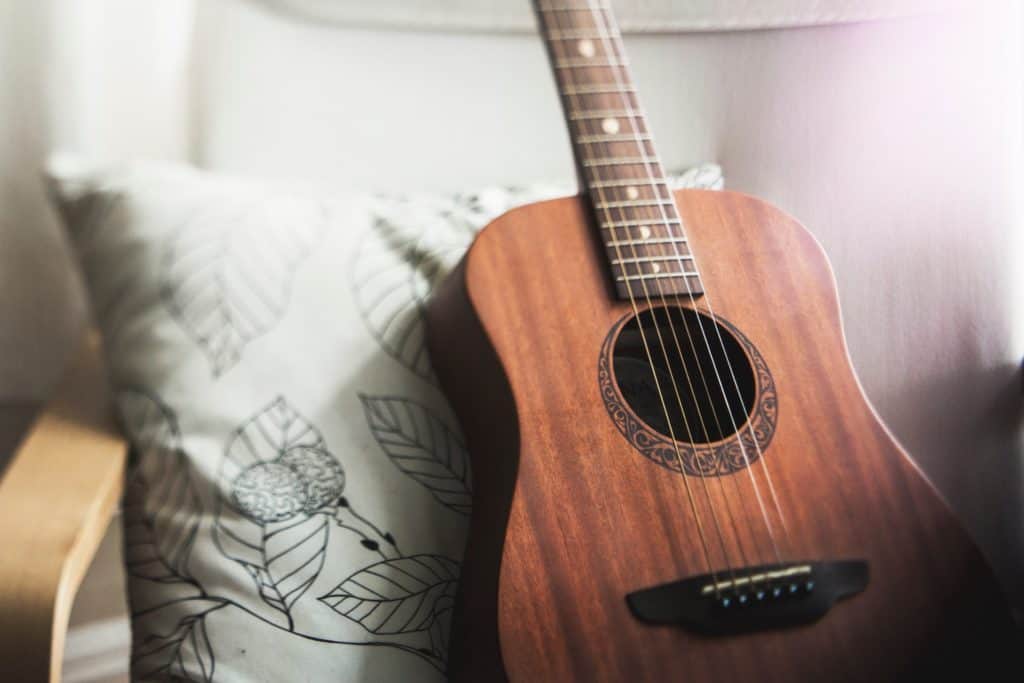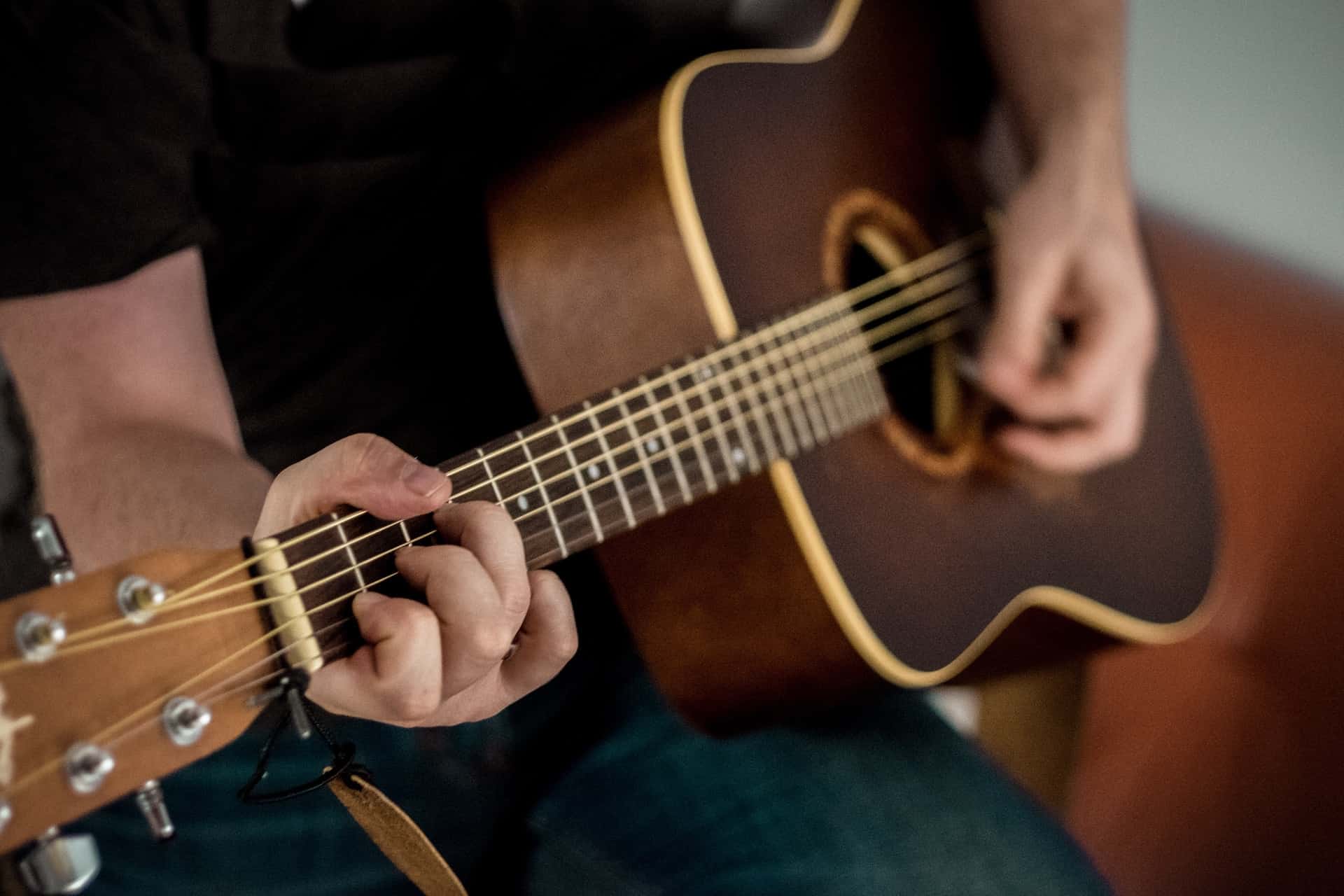Is it possible to learn guitar for left-handers? Very much so! In this article, you will find some useful tips if you’re naturally left-handed and want to learn to play guitar; along with some details of my own experience doing so.
Pros and Cons of being a left-handed guitarist
As with any activity, there are some perks and downsides to it, as a lefty, you will find the following:
- Pro: If you get a nice left-handed guitar, most people eager to play it will be restricted due to the string order. Nobody gets to play YOUR guitar but you!
- Con: Left-handed guitars are rather rare to find and will usually be more expensive than their right-hand counterparts. Plus, if you are in a situation where you’d like to show or practice your skills, and there’s a guitar nearby, chances are you’ll only find right-handed guitars. They can be fun to mess with, but things can get complicated if you’re starting and are unfamiliar with the notes and string order.
- Pro: Bonus style points when playing side by side with a right-handed guitarist, since you get to do cool mirror-like stances!
- Con: Most gadgets are designed with right-handed guitarists in mind. This isn’t a really strong con, though, since they’re not necessary to learn guitar. All you need is a guitar, maybe a pick, and the right mindset.
So, you’ve decided to give it a try? Let’s get started.
Step 1: Make sure your grip is left-handed
How do you feel more comfortable when trying to play the guitar? Remember that when playing guitar, timing, strength, and speed are important in both hands, but the tasks each hand performs are different from each other; one hand will either pulse your strings or hold a pick, and the other will step on the strings to get different notes and chords out of them. If you’re a lefty, you should be more comfortable by holding your pick with the left hand and having your right hand be your “chord hand”; as a result, your guitar will be pointing to the right. I’ve seen right-handed people feeling more comfortable playing guitar as lefties, so it is worth considering grabbing the guitar the other way round and try to play it as a right-handed if that’s what feels more natural to you.
Step 2: Get an acoustic guitar, re-string it

If you are committed to learning guitar, make an effort to buy an acoustic guitar that is symmetrically braced and preferably has no scratch guard. This is the closest, cheapest alternative to have as a left-handed guitar, and the only modification it would require to re-string it in reverse order so that the low E string (the 6th string) is “at the top” for you. Usually, guitar stores will take care of this for a small fee; in some, you will get it done for free. Sadly, when I bought my first guitar, they didn’t do it, but the guy was giving me guitar lessons was kind enough to show me how to replace the strings myself– and I had a fun afternoon switching the order of my strings, effectively turning my acoustic guitar into a left-handed one.
Why is this an important step? As stated above, left-handed guitars (especially electric guitars) are harder to find and usually more expensive, and buying a right-handed asymmetrical guitar won’t do the trick. Electric guitars are calibrated in a way that won’t allow them to be re-strung as a lefty one easily. Most accessories like the scratch guards, the tremolo arm, and the input sockets will be in unnatural places for you. And to top, all that the bridge reach in the highest notes would be facilitated for a right-handed person and conversely, uncomfortable for a lefty trying to play it. So, use a symmetrical acoustic guitar to begin. The cool things in the electric spectrum can wait.
Step 3: Get used to the comments. Get the right mindset.
If you hang out with people who want to say they play guitar (but never earn anything past Sweet child o’ mine and Nothing Else Matters) you’ll hear things like:
- Why do you play like that? You’re grabbing it wrong, the guitar should be pointing to the left.
- Your guitar doesn’t sound right dude, something must be wrong with the strings…
- But this and that artist was left-handed and played right-handed anyway, you’re just lazy…
Disregard those comments. Eyes on the prize: you’re following the steps of left-handed artists like Paul McCartney and Jimi Hendrix. Let that sink in. Jimi. Hendrix.
Step 4: Learn as any other guitarist would do.
After what we’ve discussed, it’s important to say there’s no magic or mystery to learning guitar for left-handers; nothing in the process is different, except which hand is used for what, and that can even become an advantage. I found while learning that when you face a screen with a tutorial in it or a live instructor and you’re watching them do something, it’s like you’re watching yourself in the mirror, so everything becomes easier to imitate. Here are some key points to consider, regardless of your laterality:
Make sure you have good posture and be aware of any unnecessary tension; if you’re too rigid, you might hurt yourself and will definitely lose speed and coordination.
It’s fun to learn with songs, but you’ll find playing scales and doing different finger exercises will be very useful. Speed for your left hand is like leg day at the gym. We never skip leg day at the gym.
Work your bars early on! Push yourself out of the comfort zone that open chords can create, and you’ll be playing like a true rockstar in no time.
Have a healthy relationship with music theory; this will help immensely to understand the ‘hows’ and ‘whys’ of music and will allow you more creative freedom.
You do not need any expensive lessons in an academy or classroom setting to learn guitar – you can learn entirely online, and that’s what I’ve done myself mostly. Check our review of the top 10 guitar learning programs to find awesome resources to get started and get yourself playing in no time!
Step 5: Enjoy yourself!
Have fun playing! It’s easy to forget enjoying yourself when you’ve reached a roadblock or a plateau, that happens and it’s understandable. Slow down your exercises, find inspiration elsewhere, and keep a positive attitude toward it.




